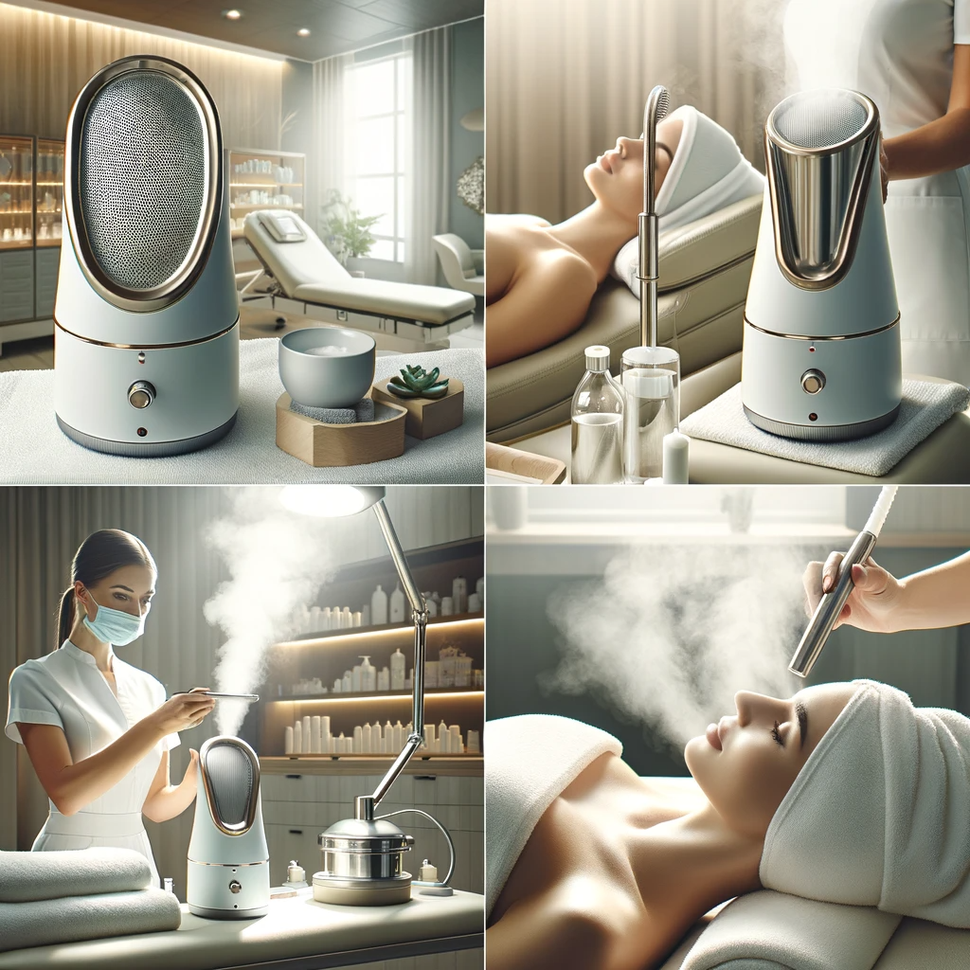
Choosing an Esthetician Steamer: A Technical Purchase Guide
Posted by The MassageTools Team on Jan 4th 2024
Navigating the world of esthetician steamers can be challenging for professionals in the beauty and spa industry. This guide offers insights into selecting the right steamer, ensuring you make a technical and informed choice that suits your business needs.
Table of Contents
Understanding Esthetician Steamers
An esthetician steamer is a pivotal tool in modern skincare, transforming how professionals conduct facial treatments. It works by using warm steam to open pores, cleanse deep tissue, and prepare the skin for further skincare treatments. The enhanced permeability of skin after steaming aids in the effectiveness of topical products, contributing significantly to overall skin health and appearance.
Choosing the Right Esthetician Steamer
When selecting an esthetician steamer, consider a few key factors:
- Type of Steamer: There are various types of steamers, including professional, portable, and handheld models. Each serves different purposes, with professional models being ideal for in-house treatments due to their automatic steam production and built-in seating for optimal client comfort. Consider pairing your steamer with a professional med spa chair for the complete setup. Handheld and portable options are great for mobile beauticians or those who offer home services.
- Technology and Features: Look for steamers with innovative technologies like ionic or nano-steam, which enhance the penetration of water molecules into the skin. Features such as adjustable nozzles, quick heating times, and ease of use are also important.
- Safety and Maintenance: Always prioritize steamers that are easy to clean and maintain. Regular cleaning is essential to prevent mold or mildew buildup. Additionally, ensure the steamer allows for a safe distance between the device and the client’s skin to prevent steam burns.
Benefits and Safety Considerations
Facial steamers offer numerous benefits, including pore cleansing, enhanced skincare product absorption, improved circulation, and relaxation. However, they are not suitable for daily use as overuse can damage collagen in the skin, leading to sagging and aging. Professionals should also be aware of the risk of steam burns and ensure the correct distance and temperature settings are used during treatments.
Professionals should also consider the specific needs and lifestyle of their clients. For example, individuals who are dehydrated or have excessive sun exposure may require less frequent steaming sessions.
How to Use an Esthetician Steamer
The process of using an esthetician steamer involves several steps:
- Prepare the client’s face by cleansing and removing makeup.
- Fill the steamer’s water reservoir with distilled water to prevent clogging.
- Position the steamer at a safe distance from the client’s face.
- Steam for about 10 minutes, allowing the client to rotate their face for even coverage.
- After steaming, apply toner, serum, and moisturizer to maximize the benefits of open pores.
Dos:
- Do Use Distilled Water: Always use distilled water in your steamer. Regular tap water can contain minerals and chemicals that might clog the steamer or be less beneficial for the skis.
- Do Clean Regularly: Keep your steamer clean. Regular cleaning prevents mold, mildew, and ensures it functions effectively. Clean after every use to maintain hygiene standards.
- Do Check the Client’s Skin Type: Assess your client’s skin condition before using a steamer. Those with certain skin conditions like rosacea, eczema, or sensitive skin might not be suitable candidates for steam treatments.
- Do Follow Instructions: Each steamer model has specific instructions for use. Ensure you’re familiar with these to maximize the steamer’s effectiveness and longevity.
- Do Maintain a Safe Distance: Keep a safe distance between the steamer and the client’s skin to avoid steam burns. Adjust the steamer’s settings as needed to ensure comfort and safety.
Don’ts:
- Don’t Overuse: Avoid using the steamer too frequently. Overuse can lead to dehydration of the skin and breakdown of collagen, leading to sagging and aging. Limit steaming sessions based on the client’s skin type and condition.
- Don’t Ignore Safety Concerns: Be mindful of the steam temperature and the client’s comfort. Steam burns can occur if the steamer is too close or if the steam is too hot.
- Don’t Use on Certain Skin Conditions: Be cautious when considering steaming for clients with certain skin conditions like melasma, severe acne, or broken capillaries. Steaming can exacerbate these conditions.
- Don’t Forget to Prepare the Skin: Always start with a clean face. Remove makeup and dirt to ensure the steam can penetrate effectively and safely.
- Don’t Ignore the Client’s Lifestyle: Consider the client’s lifestyle and skin care regimen. Those with healthier lifestyles may benefit more from frequent steam treatments
Conclusion
In conclusion, choosing the right esthetician steamer involves understanding the different types available, their features, and the benefits they offer. Safety and proper usage are paramount to ensure the best results for your clients. Remember, a good esthetician steamer is not just about the immediate effects; it's about enhancing the overall skin health and experience of your clients. Complement your steamer with a comfortable spa bed to create the ultimate treatment environment.



